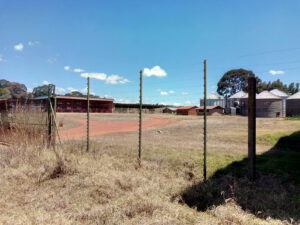March 6, 2023
#6: New Glossary Entry: “Patient Capital”
Our website operates by engaging with a range of keywords that help us make sense of the social production of institutional landscapes. Keywords are important empirical terms that are frequently used in everyday language, but that – at a higher level – should always receive critical scrutiny. One such word is “Patient Capital”, which has become a mainstay in arguments trying to mobilize “finance for development”. Partly building on his research in Tanzania, Geographer Gideon Tups helps us make sense of the word.
***
“Patient capital” can play a crucial role in converting farmland into an asset. Although there is no common definition of patient capital, there is broad consensus about its purpose. Patient capital shields non-financial corporations from “the need to react to the short-term vicissitudes of financial and product markets, or to focus on short-term financial gains at the expense of long-term gains” [1][2]. In other words, patient capital allows incipient agri-investment projects to operate under relative autonomy and without making quick decisions based on short-term financial gains during the early period of the deal cycle. While this focus on long-termism “risks a normative assumption that [patient capital] is always positive” (ibid, 629), it also brings its own on-farm risks, such as the possibility of underperformance, malpractice, or fraud.In the context of agri-investment projects, particularly those targeting land-based production, development agencies and philanthropic investors are major sources of patient capital because they are often willing to co-fund high-risk, low-return projects on concessional terms. As such, patient capital can also escort investments of impatient capital by private equity investors [3].
This pivotal role of patient capital is epitomized by recent large-scale land acquisitions in Tanzania. Already since around 2010, social impact investors such as the UK-led AgDevCo advocate for patient capital as a “highly effective means of ‘levering-in’ large amounts of private capital into the sector, thereby kick-starting sustainable agricultural investment” [4]. Although AgDevCo and similar investors operating in Tanzania succeeded in mobilizing substantial patient capital under this premise, ensuing farmland acquisitions were shaped by controversies and even by total failures. Land conflicts with local communities, agro-economic non-performance, and a loss of political support eventually led to several unscheduled divestments and international arbitration cases between investors and the Tanzanian state [5][6][7]. The Tanzanian experience highlights thereby that patient capital initially functioned to make otherwise risky investments feasible. Arguably, however, it did so against-all-odds and was often blind to past experiences of failed large-scale schemes in the country [8]. Therefore, the underpinned de-risking logic of patient capital led not only to uninformed and fast-tracked investments, but also left an unruly vacuum of accountability and conflict once global finance hit the harsh realities of farming in Tanzania.

Only few years after the US-based Clinton Foundation mobilised patient capital to develop a 1,000 ha farm in Kilolo, Tanzania, the investment was abruptly abandoned as operational costs escalated, and the Tanzanian government questioned the farm’s non-profit status. Source: Tups 2018.
[1] Braun B (2022) Exit, Control, and Politics: Structural Power and Corporate Governance under Asset Manager Capitalism. Politics & Society 50: 630-654. [2] Deeg R and Hardie I (2016) What is patient capital and who supplies it? Socio-Economic Review 14: 627-645. [3] Brooks S (2016) Inducing food insecurity: financialisation and development in the post-2015 era. Third World Quarterly (37): 768-780. [4] Palmer K (2010) Agricultural growth and poverty reduction in Africa: the case for patient capital. London: AgDevCo. [5] Hartmann G, Mwaka I and Dannenberg P (2021) Large investments, small farmers: A financialisation perspective on value chains in a development corridor. Development Southern Africa 38: 122-138. [6] Blache A (2020) Conflict & Resistance around a Rice Development Scheme in the SAGCOT Area of Tanzania. In: Lind J, Okenwa D and Scoones I (eds) Land, Investment & Politics: Boydell & Brewer, pp. 78-88. [7] Sulle E (2020) Bureaucrats, investors and smallholders: contesting land rights and agro-commercialisation in the Southern agricultural growth corridor of Tanzania. Journal of Eastern African Studies 14: 332-353. [8] Westcott N (2020) Imperialism and Development: The East African Groundnut Scheme and Its Legacy. Woodbridge: Boydell & Brewer.